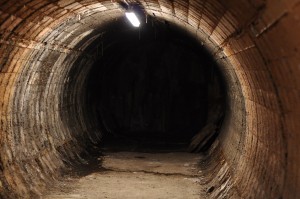In RadioLab’s article called “Color Walking” by Phia Bennin and Brendan McMullan, they encourage people to observe a specific color each day and see where it takes them. Going day by day, we tend to ignore the vibrant colors around us and do not notice how these colors can be connected to form the beautiful masterpiece that the world is. When people make a conscious effort to notice these colors and their connections, the world becomes a more interesting place and one’s perspective of their environment is subject to change.

Sumner, Thomas. “Why Some Rainbows Are All Red.” Science News. N.p., 18 Dec. 2015. Web. 09 Mar. 2016. <https://www.sciencenews.org/article/why-some-rainbows-are-all-red>.
In the podcast called “Color” by RadioLab, they discuss how the ability of sight is different in various species and even in different people. The majority of humans are trichromatic, meaning that they have three cones in order to see color: blue, green, and red. These three cones and the combination of them allow us to see millions of shades of colors. However, there are some women that are tetra chromatic, meaning that they have a yellow cone in addition to the other three cones.This is possible because women have an XX chromosome, so all women are born with the potential ability to have four active cones; although, in most women the fourth cone is not active. The interesting thing about this discovery of the active fourth cone is that these that tetra chromatic women can be found by doing a DNA test. However, when these women are found, few of them actually see the slight differences in colors that look the same to most people. Living in the artificial trichromatic world that humans have made for themselves, most tetra chromatic women are surrounded by an environment where they cannot express this unusual trait. For example, T.V.s, the ink in printers, and artificial food colorings are all trichromatic to name a few. Her brain has not been conditioned to see these unfamiliar colors because she is only surrounded by a trichromatic world. It was found that the women in an environment where they are more exposed to the natural colors of the world are more likely to be able to see these slight differences in color. For example, a florist or interior designer may have conditioned their brains to see these different colors whereas a secretary is not as likely to have done so.
This discovery puts a new spin on the first article that was mentioned because when looking to notice the colors surrounding you, there is even more depth if you are a tetra chromatic woman. It is a fun exercise to practice what the article suggests which is to pick a specific color at the beginning of the day and notice as many things as you can that are that color and the various shades of that color. A tetra chromatic woman may be able to challenge herself and pick out how two colors may vary and how many different colors they see at sunset. This exercise attempts to make a greater connection with people and their surroundings and it may spring a more powerful interest in careful observation.





